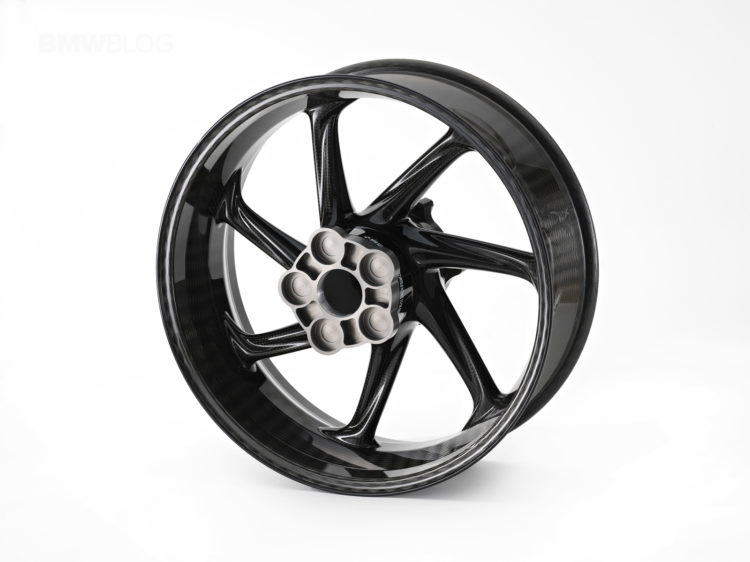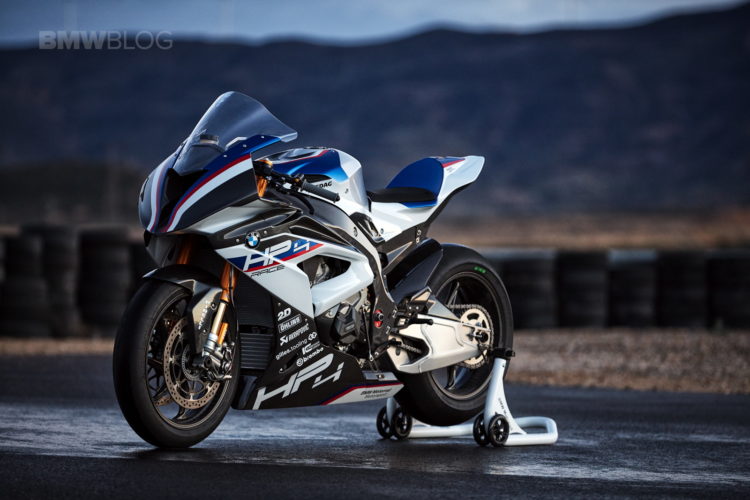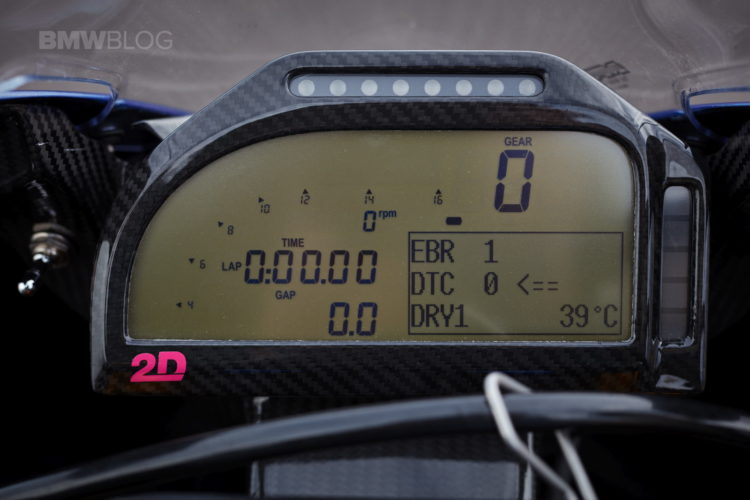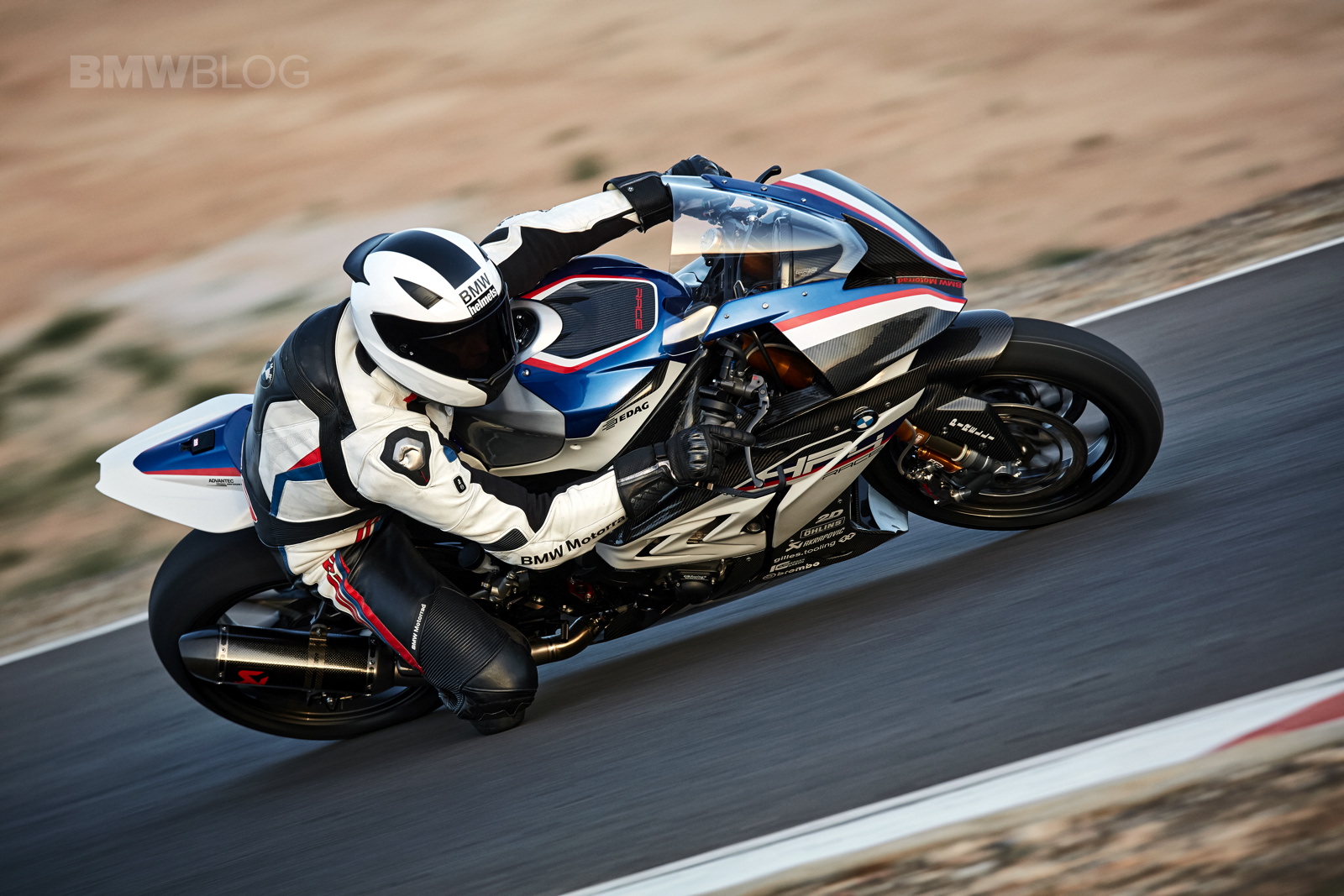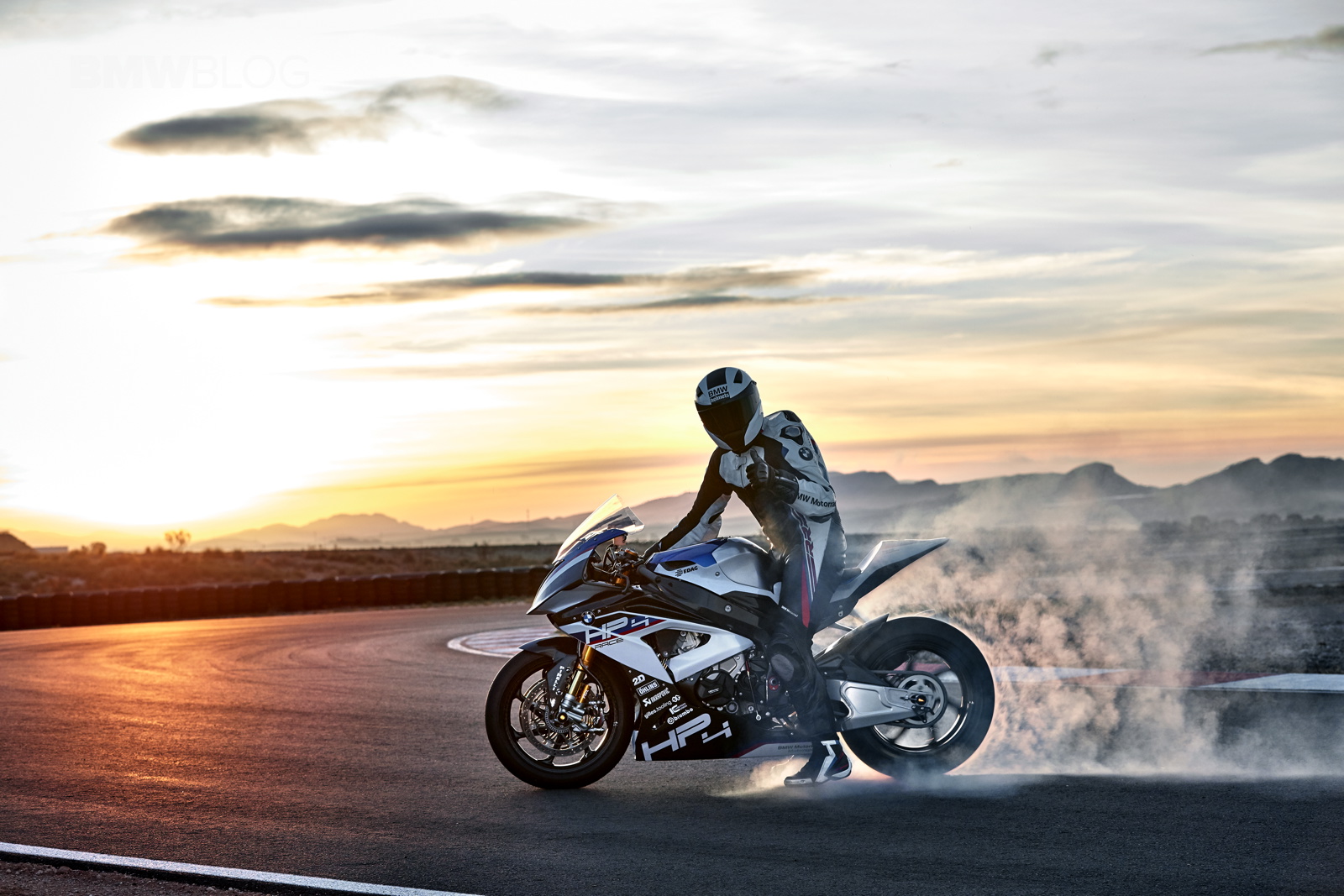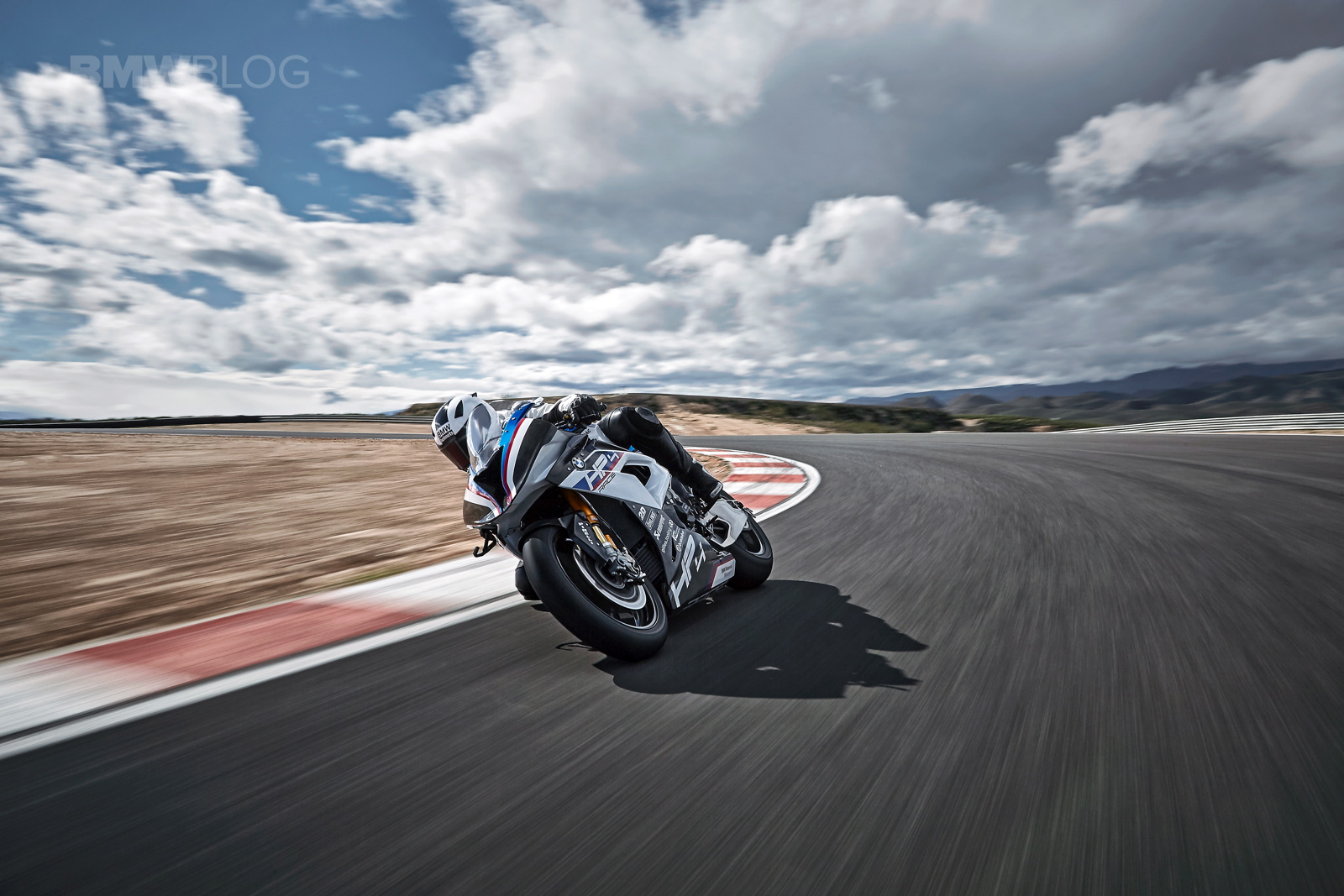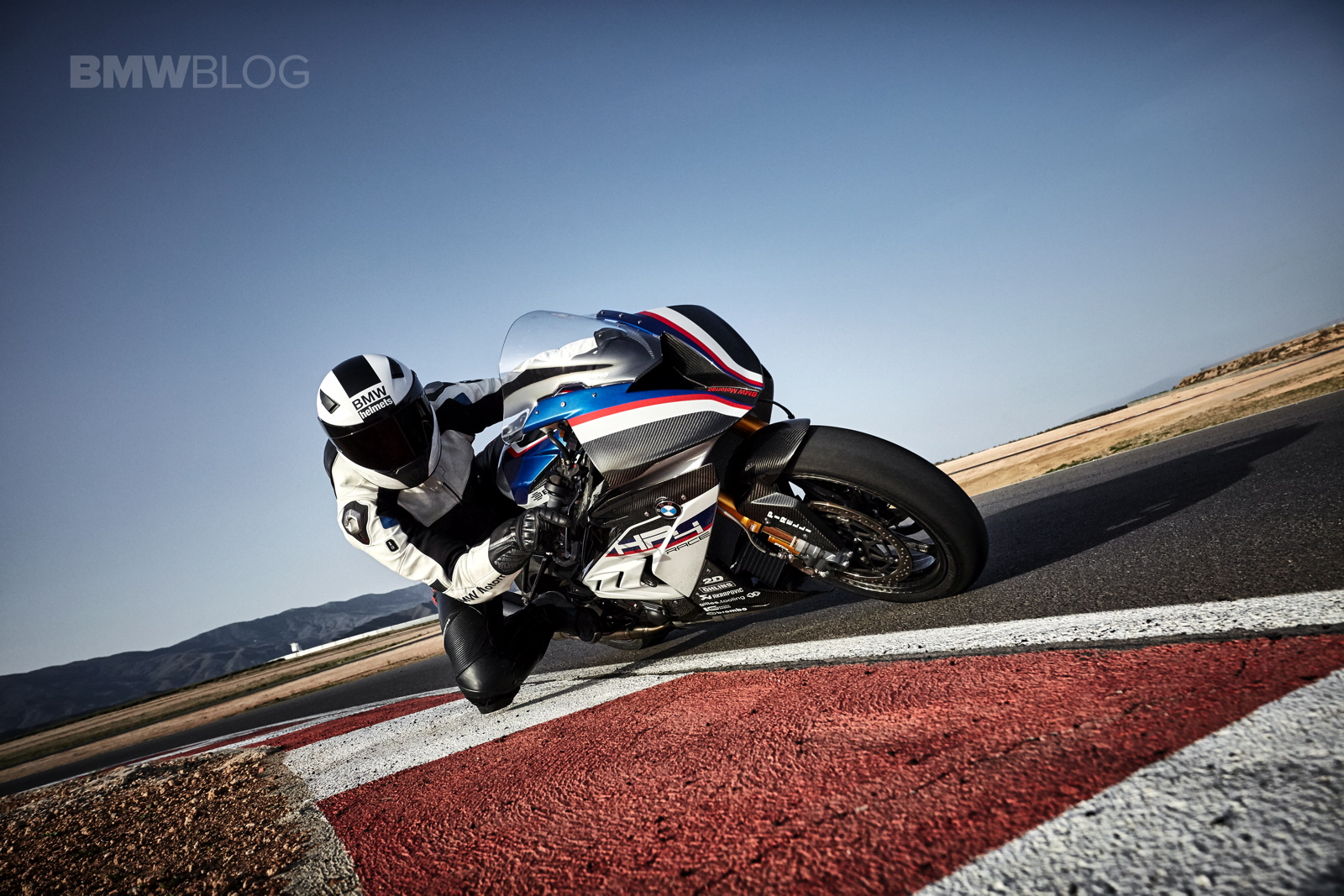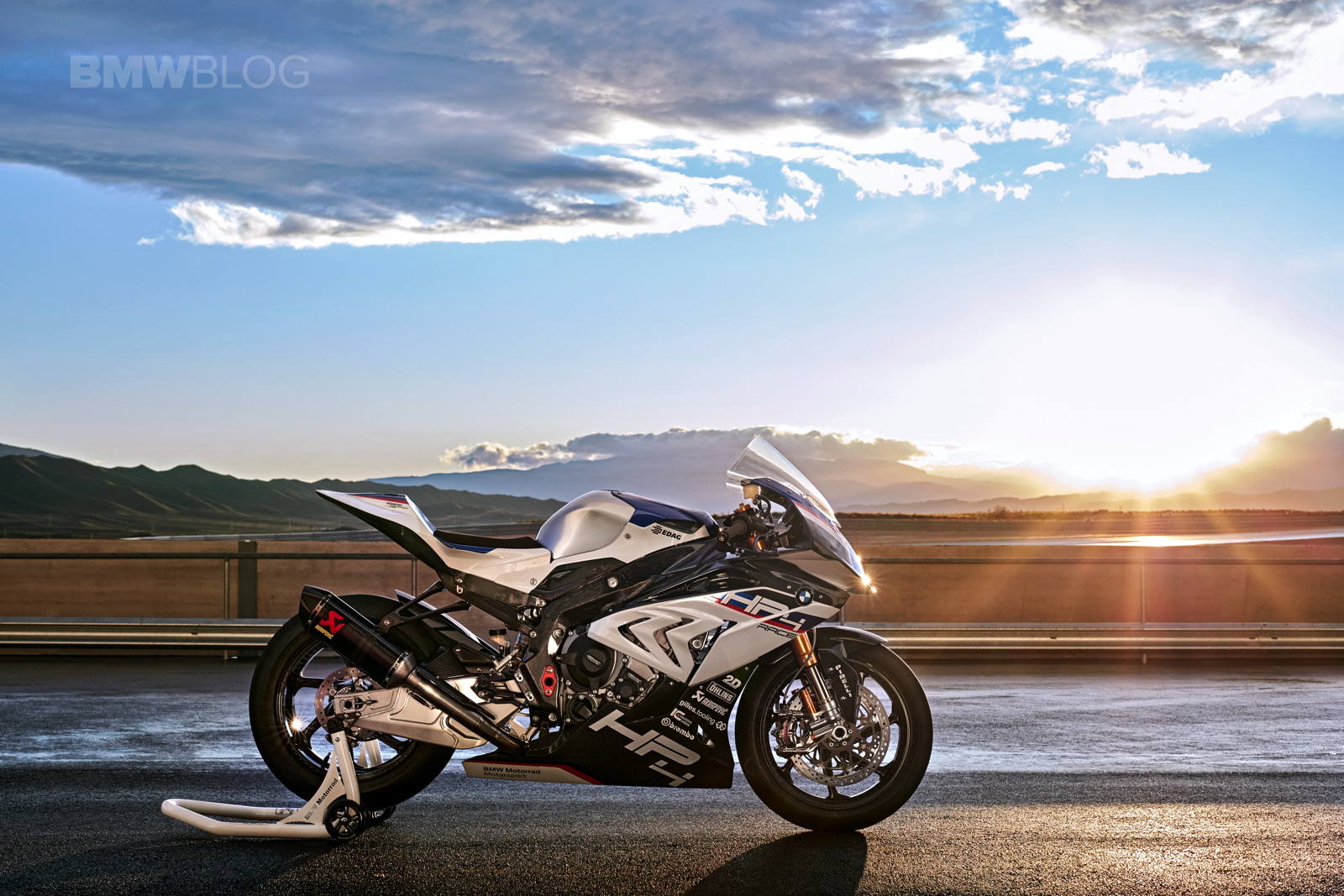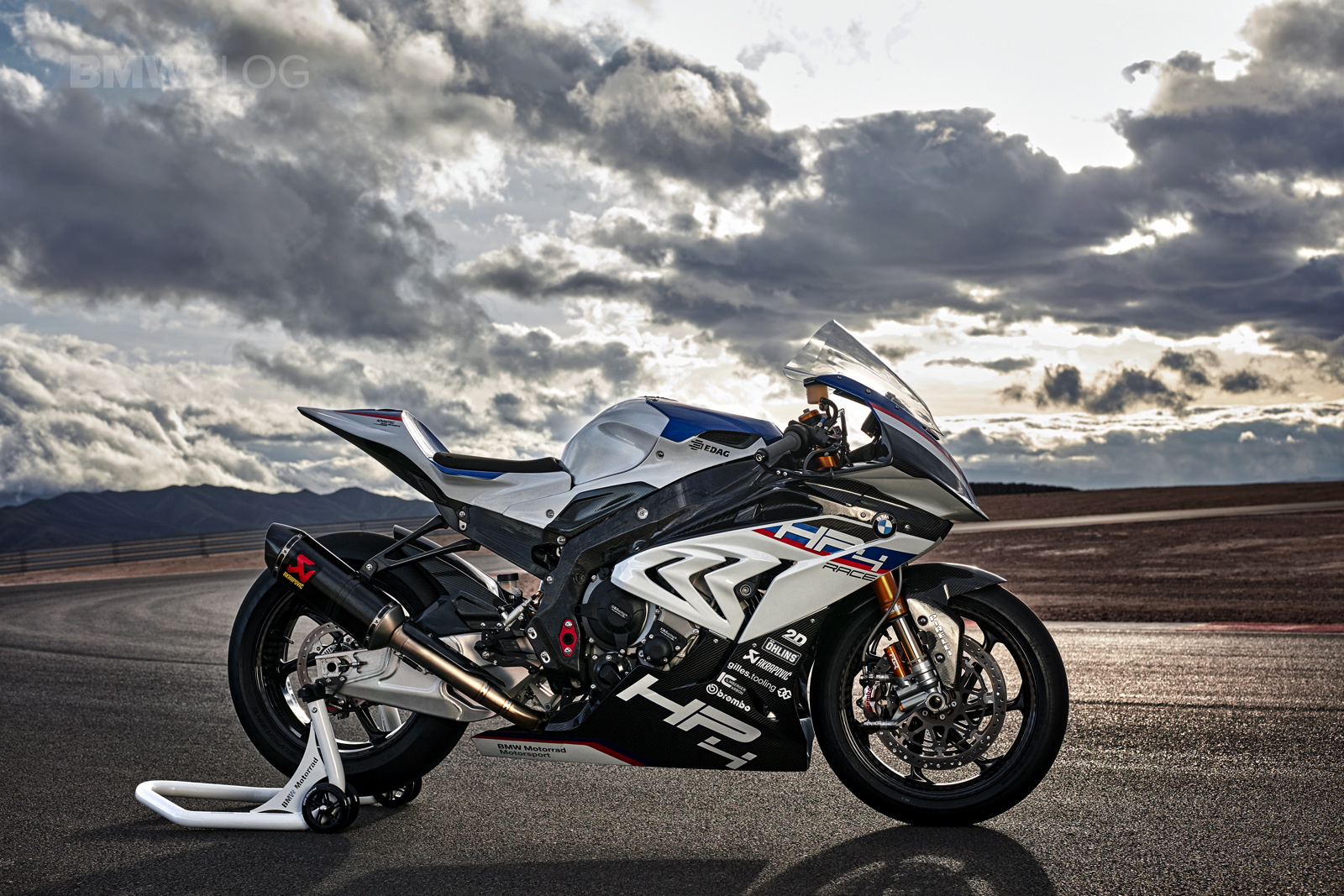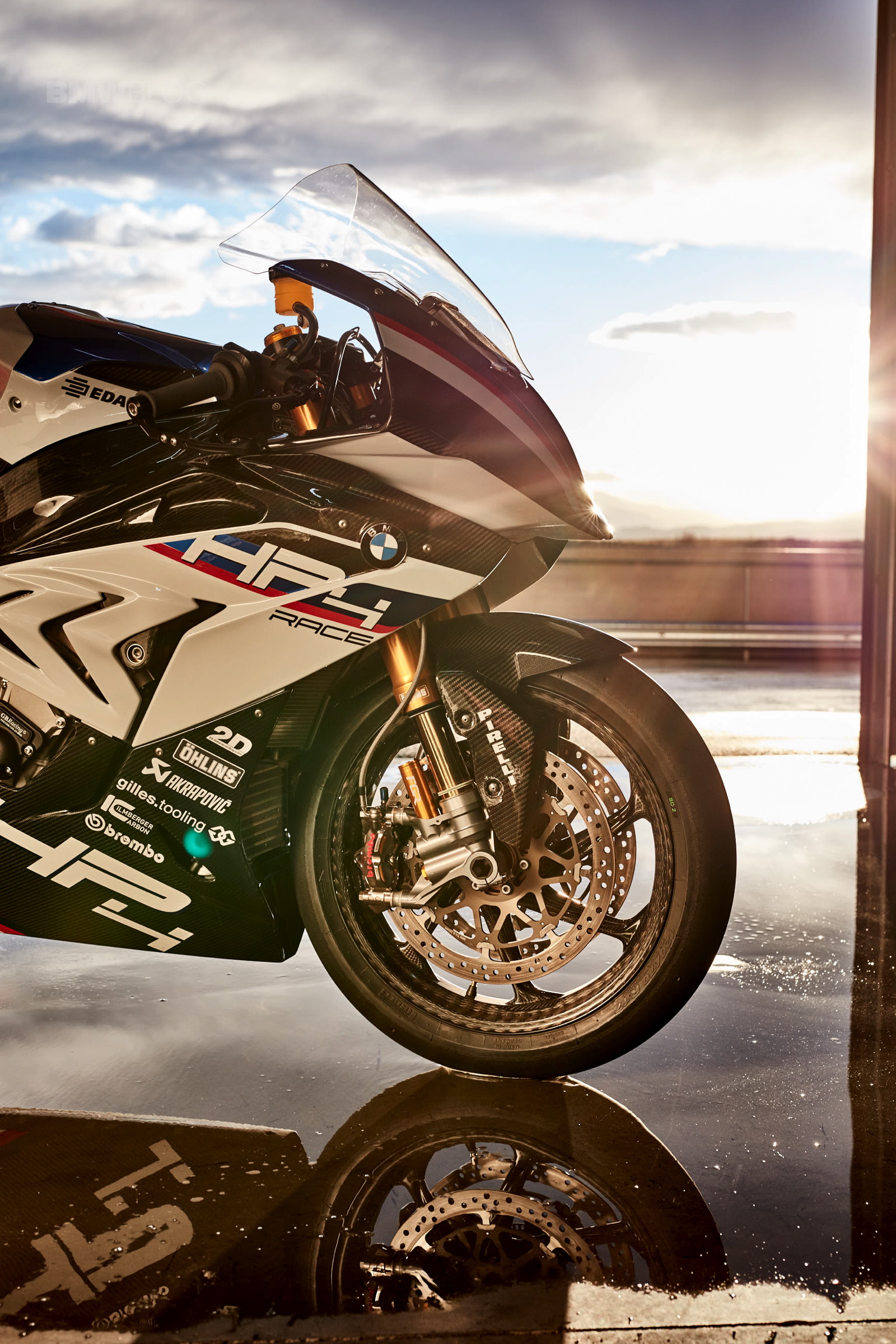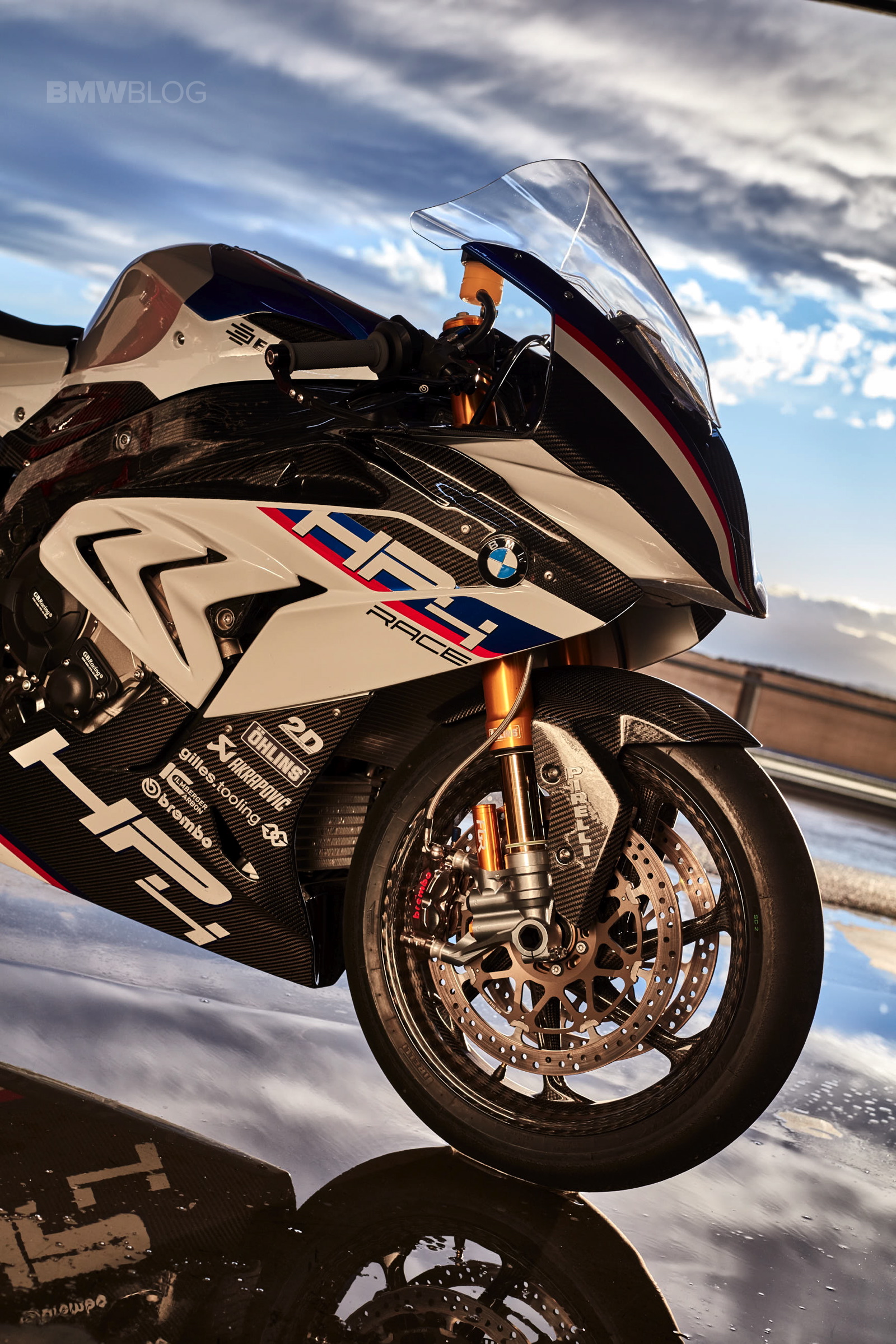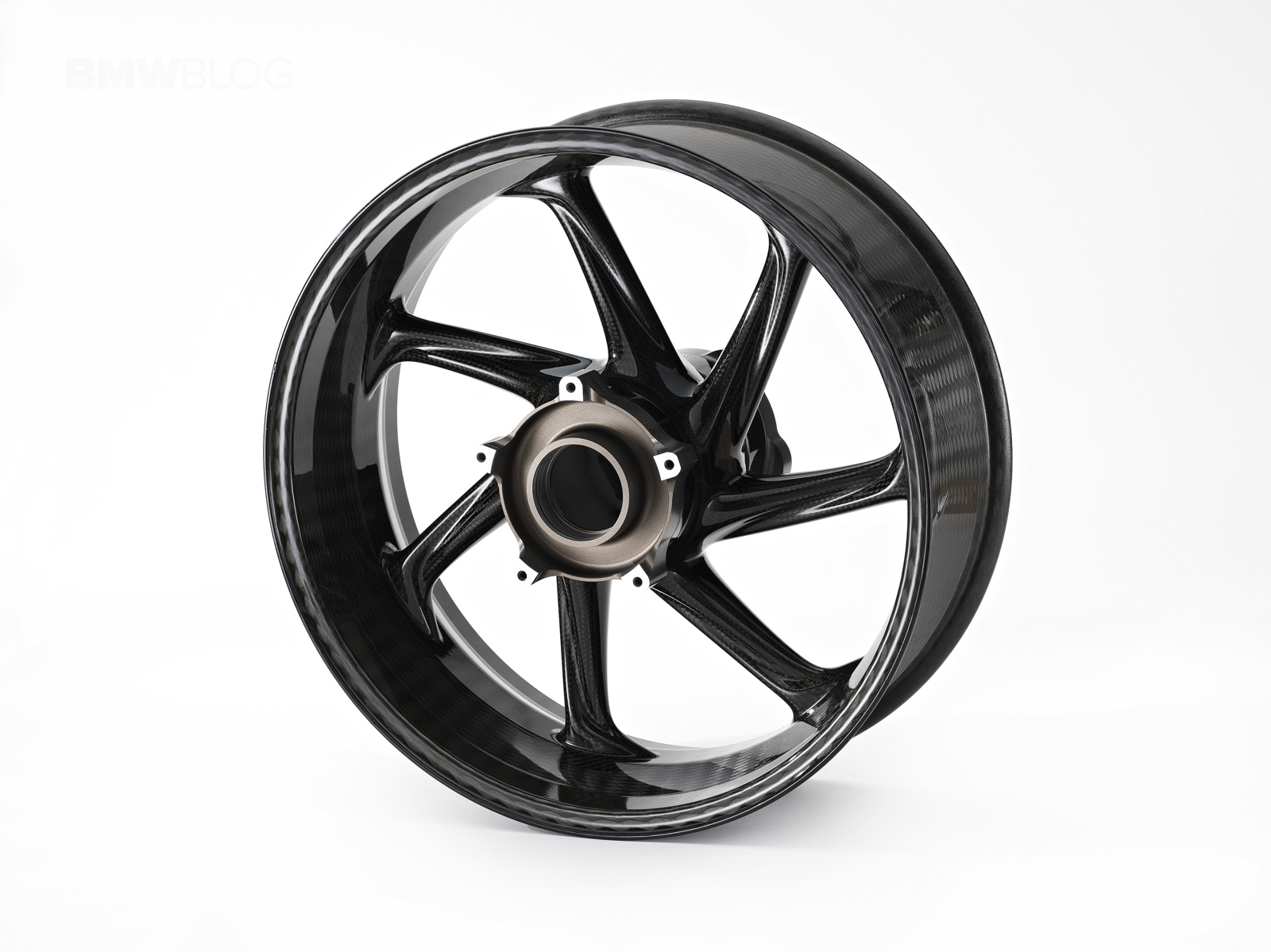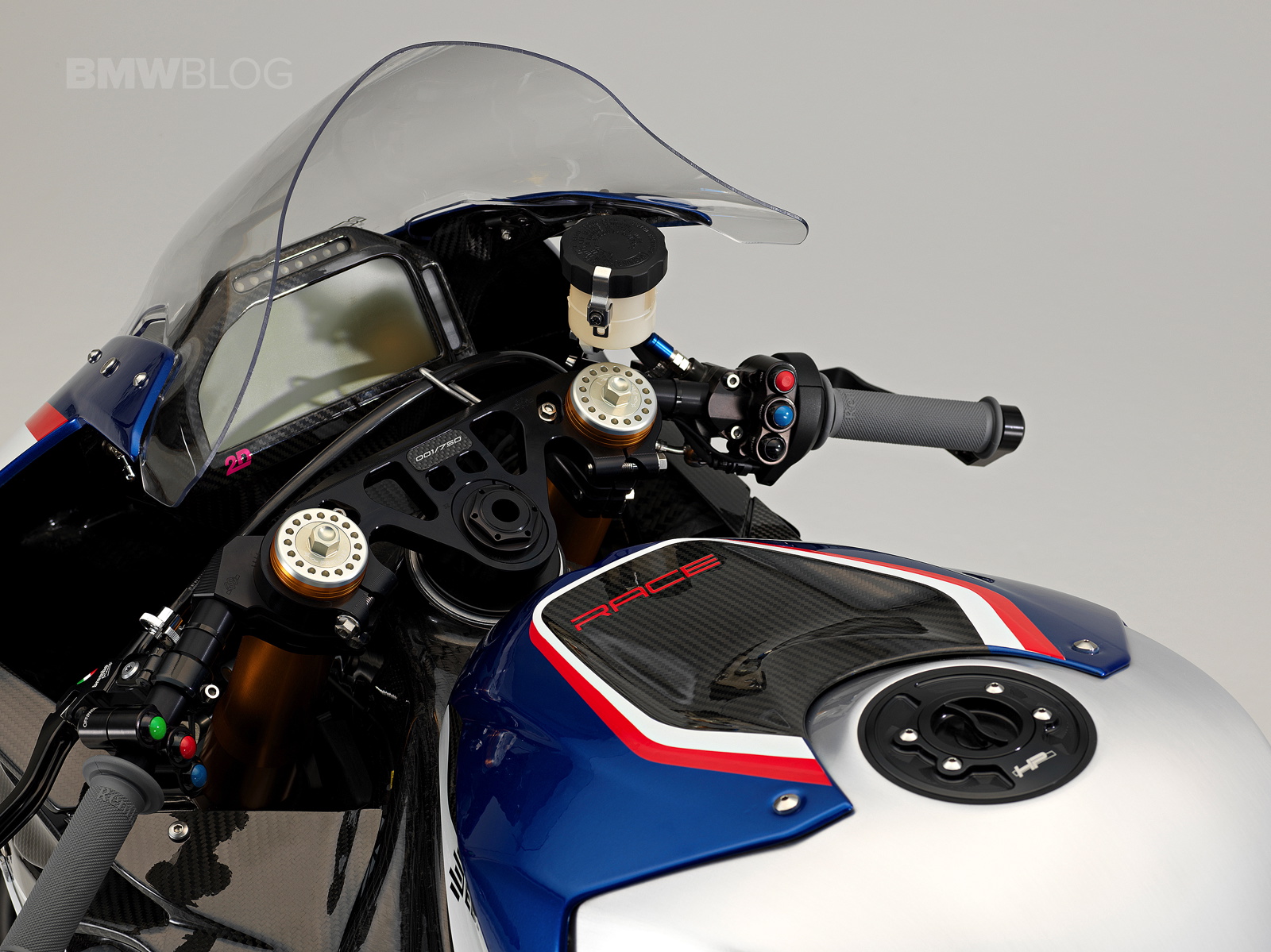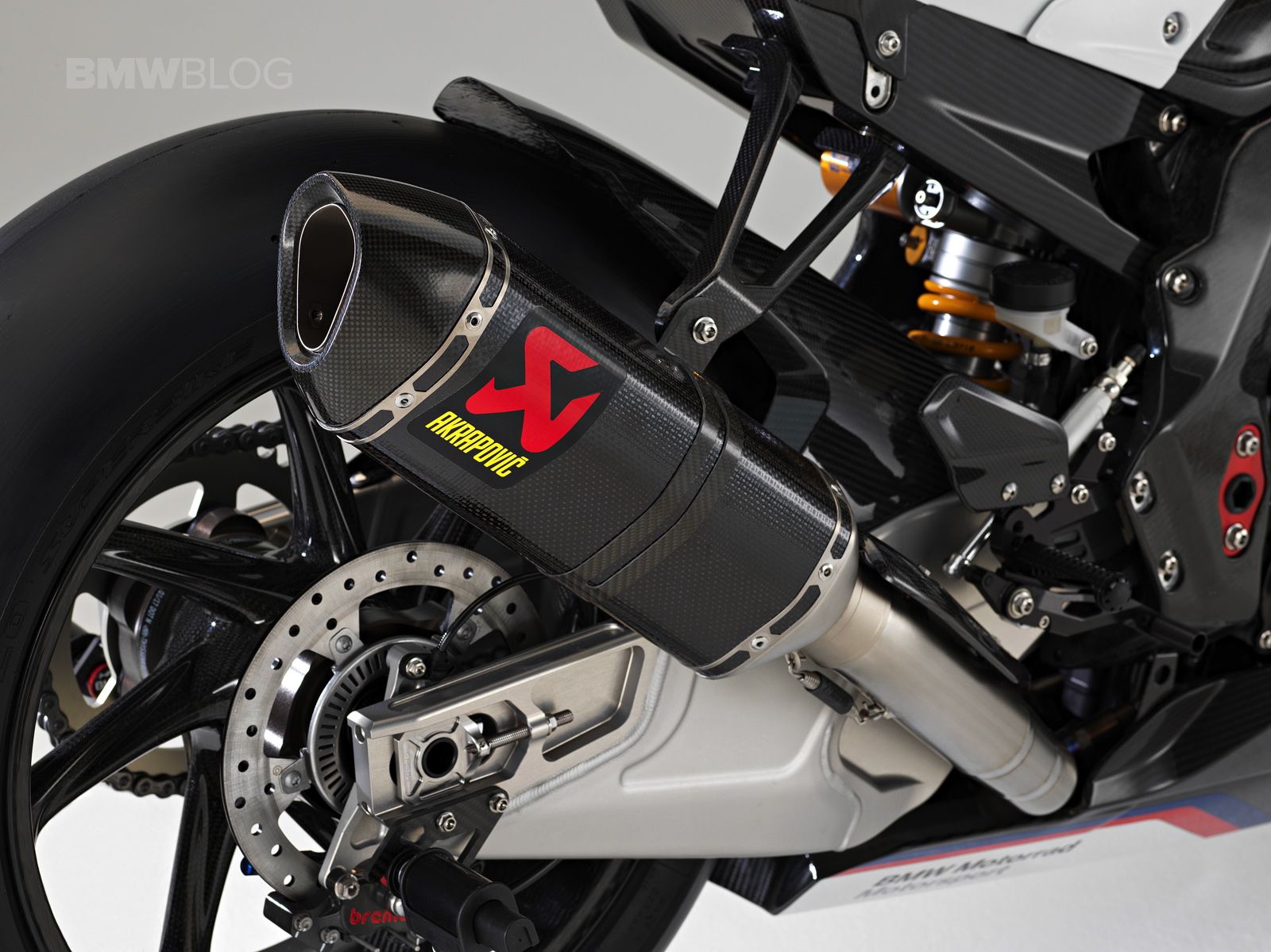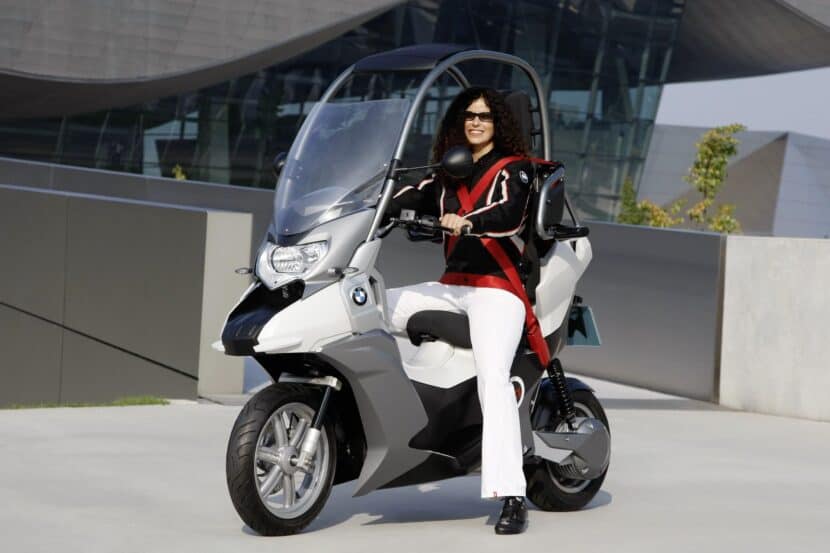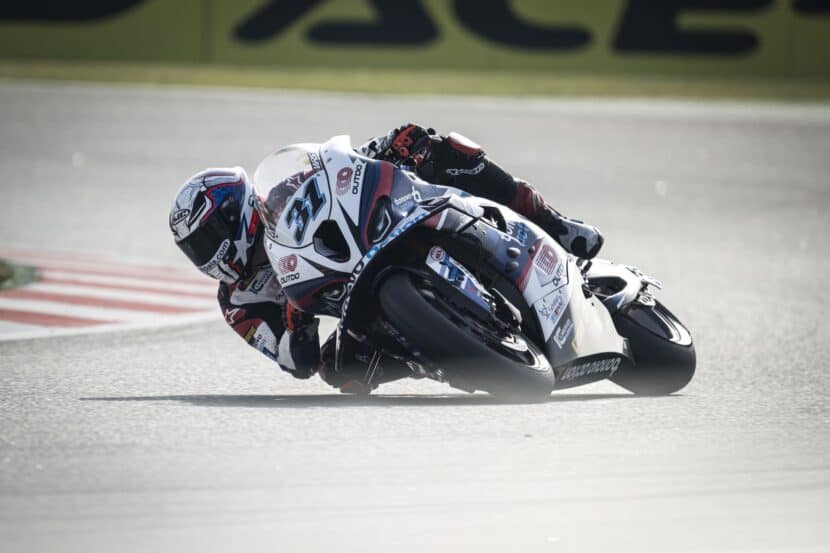During last year’s EICMA, BMW Motorrad displayed a new halo model, which it dubbed the “HP4 Race.” At the time details were sparse, however, it was immediately clear that this new vehicle was a significant leap forward from the HP4, which could best be described as a more exclusive and slightly modified version of the S 1000 RR. The HP4 Race sported a full-carbon fiber frame, carbon fiber wheels and even carbon fiber track fairings. The latter of which best conveyed that the HP4 Race was intended as a dedicated track machine. Yet, as we reported at the time, we knew we’d have to wait until spring of 2017 to get further information. Thankfully, today is that wonderful spring day!
For starters, exclusivity was emphasized with the HP4 when it was introduced. However, now with the introduction of the HP4 Race, the original seems comparatively common. Estimates assert that around 3,000 HP4s were produced worldwide during the vehicle’s brief run. The new HP4 Race, on the other hand, has been limited to a mere 750 units worldwide.
Additionally, the new bike is, as anticipated, described as “a purebred racing bike.” And justifiably so. For example, the new HP4 Race weighs less than factory racing bikes utilized in the WSBK and only slightly heavier than MotoGP bikes. In actual numbers, the HP4 Race weighs in at a mere 377lbs. That’s its wet weight too, meaning with a full tank of fuel and with all other necessary fluids. Quite impressive, as well, is the fact that the main frame of the motorcycle weighs just over 17lbs. Also, utilizing carbon fiber for the wheels has enabled a thirty percent reduction in weight, compared to a pair of alloys.
BMW’s pioneering work with carbon fiber in its automotive division contributed significantly to the firm’s ability to adopt the material for use in its motorcycles. However, BMW’s innovative RTM process was not utilized for the sub-frame, which is produced with traditional means.
Of course, carbon fiber isn’t the only material employed to reduce weight. A more wholistic approach was taken. Take the new 4-in-2-in-1 exhaust as an example. Designed in form to be optimal for both performance and weight, the eminent metal with renown for such an application was chosen, titanium. The tank is made of aluminum, as are the HP rear sets.
The rear sets offer customers with eight different mounting positions, ensuring ideal ergonomics for a wide variety of riders. Too, the already mentioned carbon fiber sub-frame enables the seat to be adjusted to three different positions. The standard position is 32.7 inches, but it can be raised to 33.3 inches or lowered to 32.1 inches respectively. Adjustability doesn’t end there, though. The suspension, as well as its geometry, is highly adjustable.
Speaking of the suspension, the best name in the business, Öhlins, is adorned upon the upside down fork and rear spring. In fact, the setup used here, on the HP4 Race, is said by BMW to be “reserved almost solely for World Cup motorcycles.” It is upon the upper fork bridge where a carbon fiber badge indicating the production number, ranging from 1-750, rests. Keeping with utilizing only the best, Brembo GP4 PR monoblock fixed calipers are present. Another item rarely seen outside of the realm of WSBK or MotoGP.
All else being great, I’m sure you’re desperate to hear about the heart of this beast. The power plant is shared with the S 1000 RR, but it is tuned to meet WSBK specs. That means that we are talking about horsepower output well in excess of 200HP. 215HP, to be precise. That’s 16HP more than a road going S 1000 RR. RPMs are up too, from 14,200RPM to 14,500RPM. All of that power is put through a 6-speed close-ratio gearbox, which has been developed entirely for track use. Authentically, the shift pattern is reversed from the normal 1-N-2-3-4-5-6 pattern used on road bikes. Too, a performance staple, the HP4 Race features BMW’s version of an up and down quick shifter, HP Shift Assistant Pro, which enables up and down shifts without using the clutch.
As expected, the electrical systems aboard the HP4 Race are no less impressive than the aforementioned goodies. Though, rider aids like traction control may not be exclusive to this bike, one unique difference is that all settings and aids are, of course, oriented towards track use solely. Even the layout for the controls is identical to that of WSBK bikes. There is, Dynamic Traction Control, Wheelie Control, Engine Brake Retarder, Launch Control and even a Pit Lane Speed Limiter. Supercomputer on two wheels? BMW Motorrad fan Steve Jobs would likely approve. Too, the HP4 Race has an extensive rider display unit, which can also provide mechanics with a even more extensive diagnostic datum.
The one datum we haven’t yet been provided, however, is how much the new HP4 Race will cost to add to your racing paddock. One thing is for sure, though, the best of the best never comes cheap. In 2014, the HP4 could be purchased for as little as $20,300USD, yet, the HP4 Race is in an entirely different segment. Relevant competitors, like the Ducati 1299 Superleggera and new KTM RC16 Replica range from $80,000USD to a reported $107,000-$128,000USD respectively, just for context.
Visit the Author on Instagram @MikeAndHisBikes




